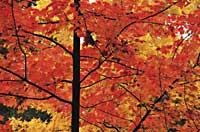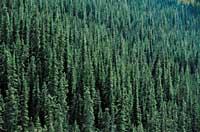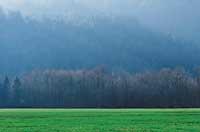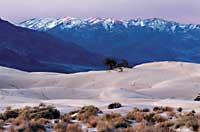Plants and CO2: not as it seems

It is said that the animals pour CO 2 and heat the planet and the plants cool it absorbing CO 2. That is why it is said that if one of them is imposed on the other, the planet is heated or immersed in glaciation; in short, the influence that living beings have on the atmosphere of our planet is more pronounced than we think.
Plants and other living beings that grow through photosynthesis, for example, absorb CO 2 from the air, mainly in spring. But in many places on the planet, in autumn and winter, photosynthesis is largely interrupted and the bacteria, fungi and animals of the earth feed on photosynthesizers. These emit CO 2, so their level increases again.
Carbon dioxide is, in general, a little acid gas that is not harmful. The concentration of this gas in the terrestrial atmosphere is very low, approximately 0.03%.
It could be thought that higher amounts of carbon dioxide, in addition to increasing the greenhouse effect, accelerate the growth of plants. A higher level of CO 2 can affect the conservation of certain plants, insects and animals, breaking the balance of the ecosystems we currently know. In fact, some plant species only grow in certain conditions.
Cultivation of plants
Plants produce organic compounds and oxygen in photosynthesis from water and carbon dioxide (i.e., from inorganic compounds), but for this purpose they need light as a source of energy. They absorb light through physical-chemical reactions. Through this metabolic process, called photosynthesis, the plants obtain the necessary nutrients to grow and develop through the mineral salts they take from the soil.

Most plants belong to group C 3, since the fixing of carbon dioxide is carried out by a molecule of three carbon atoms. There are, however, few herbaceous species belonging to group C 4, in general, with hard and fibrous stems. In this last group there are very few plants that can be sown, but there are some like corn or sugar cane.
When the CO 2 concentration is high and the humidity and temperature conditions are adequate, plants C 3 grow much better than plants C 4. At present, however, the concentration of CO 2 in the atmosphere is low compared to other times, so plants type C 3 present problems to live in dry and warm media. Therefore, at present, type C 3 plants predominate in temperate or cold climates. As we approach the equator, plants C 3 are in humid zones, while plants C 4 are in dry and sunny areas.
In the past the situation was different. The plants had no leaves during the first 40 million years of life. They did not need it. At that time there were in the atmosphere many CO 2 and the plants did not need many stomata to absorb CO 2 (the stomata are the gaseous exchange pores of the plants and are the most frequent in the leaves). They only had a green stem.
About 380 million years ago, the amount of carbon dioxide in the atmosphere decreased, making the importance and need of the leaves more evident. By increasing the number of leaves and stomata, the plants could receive CO 2 plus air. That is, despite being less, they became more efficient in absorption. But, in addition, they could evaporate more water from the stomata, so the plants developed a better cooling system, that is, they could live in hotter areas, provided they had water.
Less evident consequences
It can be thought that due to climate warming, the current territories with Arctic and Subarctic climate can be used for agriculture. Unfortunately, many of these soils would be unproductive. But in this sense there is an investigation that has generated an important role among experts. The one made on the vegetation and soils of the tundra of Alaska.

The initial idea or hypothesis of several studies is that high temperatures accelerate the decomposition of dead plants around the poles, which causes the accumulation of carbon and nitrogen in the soil. However, they have seen that, instead of storing carbon in the soil, it is released into the atmosphere in the form of carbon dioxide by nitrogen effect. In fact, nitrogen, in addition to favoring decomposition, transforms the carbon stored in the soil and emits it into the atmosphere in the form of carbon dioxide.
Therefore, although the warmer climates would double the vegetation of these cold lands and accumulate more carbon and nitrogen in the subsoil, in general, the amount of carbon dioxide released into the atmosphere would be huge.
And taking into account that in these northern ecosystems an enormous amount of carbon is accumulated, these carbon dioxide emissions would continue to play an important role in climate change.
There is another issue or research related to carbon dioxide and plant cultivation. Again you can think that the more CO 2, the more plants. But, as in everyday life, quantity and quality often do not coincide. In fact, being a lot does not mean being good, and something similar happens with plants.

Despite the increase in plant growth, these will be less nutritious, since the seeds will have less nitrogen. And nitrogen is fundamental for living things. In fact, the main components of proteins are amino acids and nitrogen is necessary to form the amino acid. So, if you have to eat more to get the same benefit, where is the advantage? As the concentration of carbon dioxide in the atmosphere increases, both animals and humans will have to ingest larger amounts of plants to reach the same level, since in nitrogen they will be lower.
Therefore, it is often mentioned that plants are the best defense against pollution by the absorption of carbon dioxide and the emission of oxygen, thus reducing greenhouse gases. And, as it were, it is also frequent that the amount of CO 2 emitted by the human being and that which the plant absorbs during photosynthesis are balanced. However, studies show that it is not so clear that this balance is achieved, since there are other terrestrial processes involved. In addition, many times carbon dioxide is not a limiting factor in the growth of plants. Consequently, the improvement that the warmer climates can suppose in the growth of plants is debatable.
Buletina
Bidali zure helbide elektronikoa eta jaso asteroko buletina zure sarrera-ontzian











